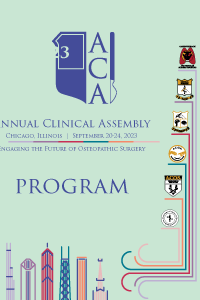Urological Surgery
Inferior Vena Cava Thrombus Associated with Renal Cell Carcinoma (RCC) with Atypical Radiological Presentation: A Case Report
- KE
Kareem A. Elgendi
Nova Southeastern University
Tampa, Florida, United States
Primary Presenter(s)
Methods or Case Description:
The patient in this case is an 80-year-old male with a complex medical history that includes hypertension, dyslipidemia, Type 2 Diabetes Mellitus, aortic stenosis, chronic congestive heart failure, and a recent pulmonary embolism. He initially presented to Morton Plant Hospital with increasing fatigue, weakness, chest discomfort and back pain presented with symptoms of fatigue and shortness of breath and was found to be hypotensive and in renal failure. Further evaluation revealed an elevated creatinine level of 1.8, hyperkalemia, and increased LDH levels. The patient also developed progressive edema in the abdomen, genitalia, and lower extremities, attributed to the occlusion of the IVC. At this point, Eliquis was discontinued, and Heparin was initiated. The patient was evaluated by both nephrology and infectious disease specialists.
CT imaging of the patient's abdomen and pelvis showed distention of the right femoral vein and significant distention of the suprarenal vena cava, which could have been due to either a thrombus or an underlying mass. Subsequent MRI of the abdomen revealed a filling defect within the right renal vein that extended into the inferior vena cava (IVC), indicating the presence of a blood clot or tumor. Following an interventional radiology (IR) venography of the IVC, a core biopsy indicated the presence of renal cell carcinoma that exhibited complete necrosis and occluded the vessel extensively. Given the risk of surgical complications, systemic therapy with Cabometyx (cabozantinib) and nivolumab was initiated. The patient showed gradual improvement, with a decrease in lower extremity edema. The patient was eventually discharged and was scheduled for follow-up with a new oncology team in Minnesota.
Outcomes: The patient initially presented with nonspecific symptoms suggestive of pulmonary/cardiovascular compromise. Abdominal imaging revealed the presence of an IVC thrombus associated with renal cell carcinoma (RCC), which was subsequently confirmed through core needle biopsy. However, there were no identified masses within the renal pelvis or kidney on imaging that could explain the presence of tumor burden or clot formation. This case is noteworthy for the confirmed diagnosis of renal cell carcinoma (via core needle biopsy of the thrombus) despite the absence of radiologic evidence of renal masses. The patient received treatment for renal cell carcinoma with Cabometyx (cabozantinib) and Nivolumab, resulting in significant improvement. Scheduled follow-up with an oncology team in Minnesota will ensure the continuation of systemic treatment. Nonetheless, the origins of the renal cell carcinoma and its association with thrombus formation in the absence of detectable renal masses or malignancy on renal imaging remain unresolved questions that warrant further investigation.
Conclusion: Our case highlights a unique occurrence of renal cell carcinoma, where an IVC thrombus develops without a detectable renal mass. The absence of radiologic evidence of malignancy within the kidneys should not exclude the consideration of renal cell carcinoma when an IVC thrombus is present.

